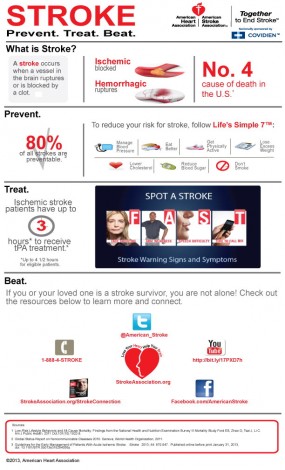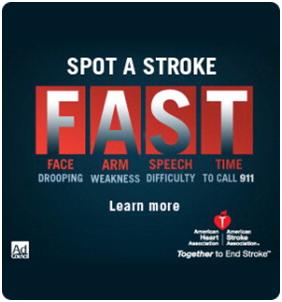 If you know what it’s like to have a friend or family member suffer a stroke, you know how hard it can be. A few weeks ago, I had two elderly family members (a husband and wife ironically) both suffer strokes within days of one another. They ended up in different hospitals and going to different rehab facilities which was tough. Their children we’re worried about when they got out, would they need in-home care? Fortunately, they are both home and doing very well. Or, as one of them says, “almost back to normal.” :)
If you know what it’s like to have a friend or family member suffer a stroke, you know how hard it can be. A few weeks ago, I had two elderly family members (a husband and wife ironically) both suffer strokes within days of one another. They ended up in different hospitals and going to different rehab facilities which was tough. Their children we’re worried about when they got out, would they need in-home care? Fortunately, they are both home and doing very well. Or, as one of them says, “almost back to normal.” :)
It isn’t just the older folks who have to be concerned, we all should be. Did you know that stroke is the fourth leading cause of death and the leading preventable cause of disability in the US? Each year, about 795,000 Americans suffer a new or recurrent stroke—that’s about one stroke every 40 seconds.
May is American Stroke Month, so I’m working with the American Heart Association/American Stroke Association and the Ad Council to raise awareness about F.A.S.T—an acronym used to recognize a stroke and what to do in a stroke emergency.
F.A.S.T. stands for:
- F – Face Drooping – Does one side of the face droop or is it numb? Ask the person to smile.
- A – Arm Weakness – Is one arm weak or numb? Ask the person to raise both arms. Does one arm drift downward?
- S – Speech Difficulty – Is speech slurred? Are they unable to speak, or are they hard to understand? Ask the person to repeat a simple sentence like: “The sky is blue.” Is the sentence repeated correctly?
- T- Time to call 9-1-1 – If the person shows any of these symptoms, even if the symptoms go away, call 9-1-1 and get them to the hospital immediately.

When you recognize a stroke and immediately call 9-1-1, the person has a greater chance of getting to an appropriate hospital quickly and being assessed for treatment options like a clot-busting drug and other medical devices. But many people do not know the warning signs of a stroke – information that may save a life.
Please join me by sharing this post with your family and friends. Thanks!
